Goth style, a recognised fashion genre, emerged in the early 1980s in the United Kingdom as the aesthetic of gothic rock or goth-rock lovers, an offshoot of the post-punk genre.
The Goth aesthetic is inspired by 19th-century fiction and horror films and stylistic visuals from the Romanticism, Medieval, Edwardian, and Victorian eras.
The term ‘Gothic’ first appeared in Italian literature (15th century), describing the aesthetics of Germanic tribes like Goths and Visigoths and the “French Work” style of architecture, which featured pointed arches, ribbed vaults, and flying buttresses that gave a sense of grandeur and mystery.
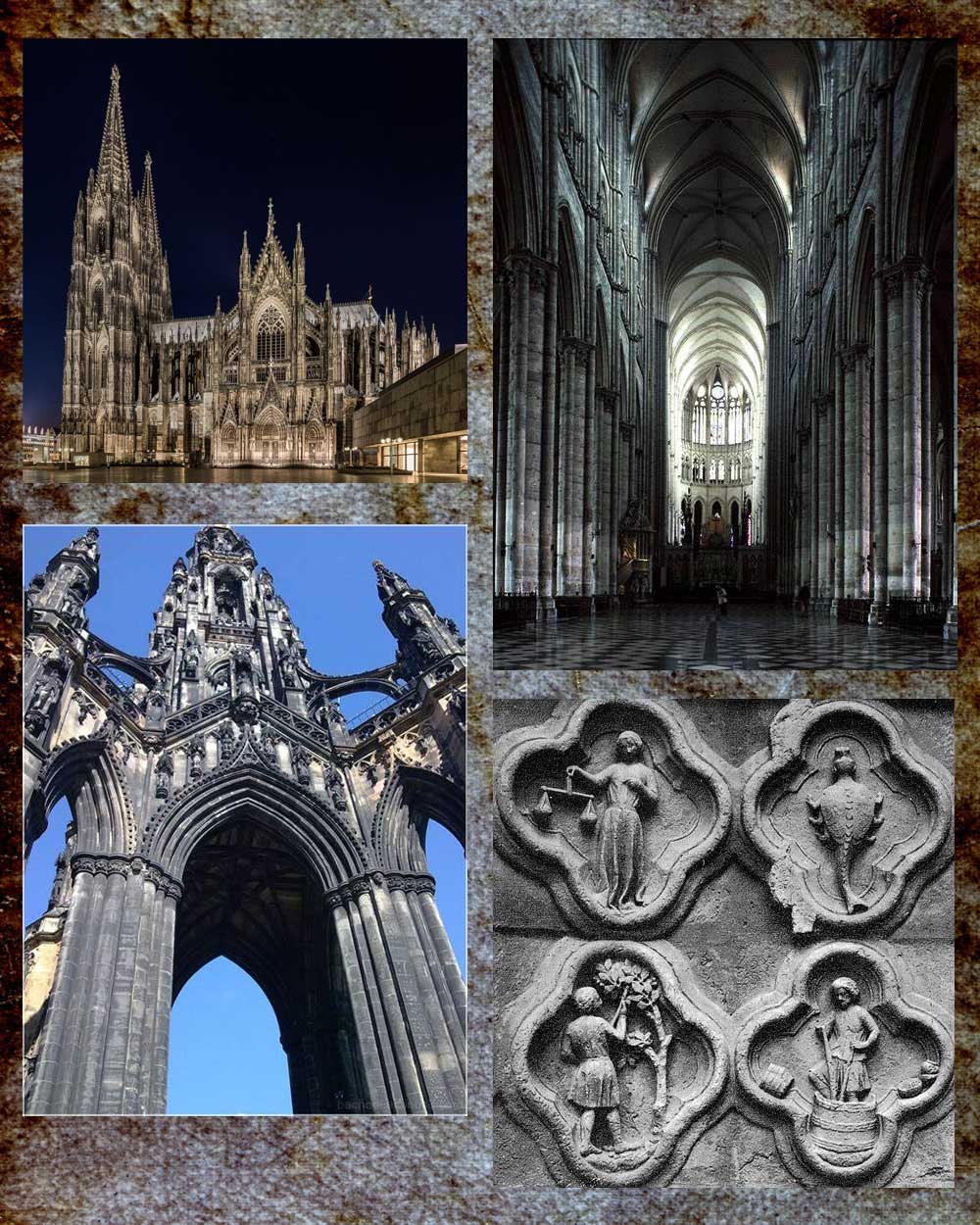
19th-century fiction literature revived the term to depict ruinous “Gothic” castles with gloomy churchyards, where supernatural characters dressed in dark, extravagant garments lived a life of mystery, suspense, and horror.
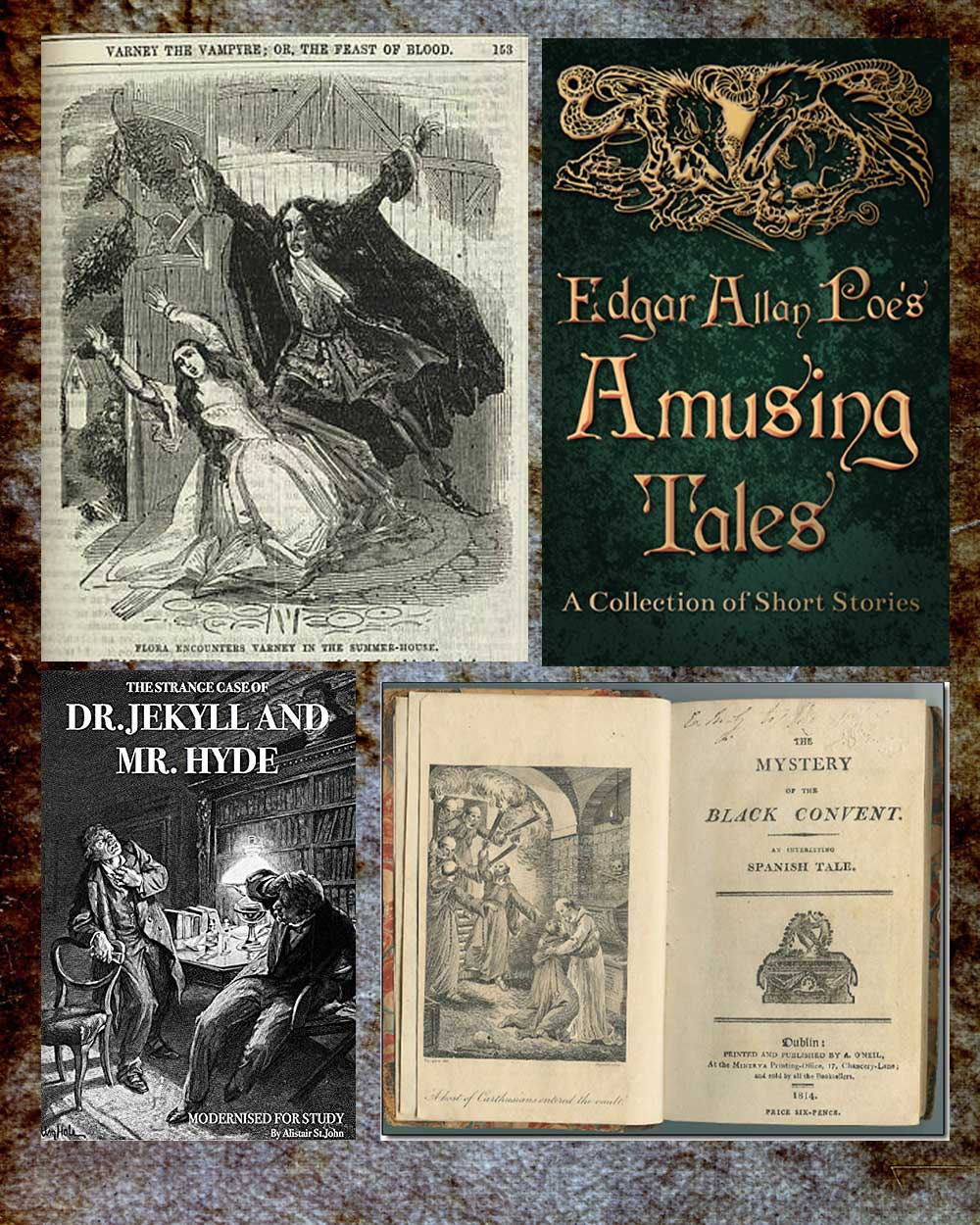
The first use of the term Goth in the context of music is credited to John Stickney’s article published in a student-run newspaper, The Williams Record, on October 24, 1967.
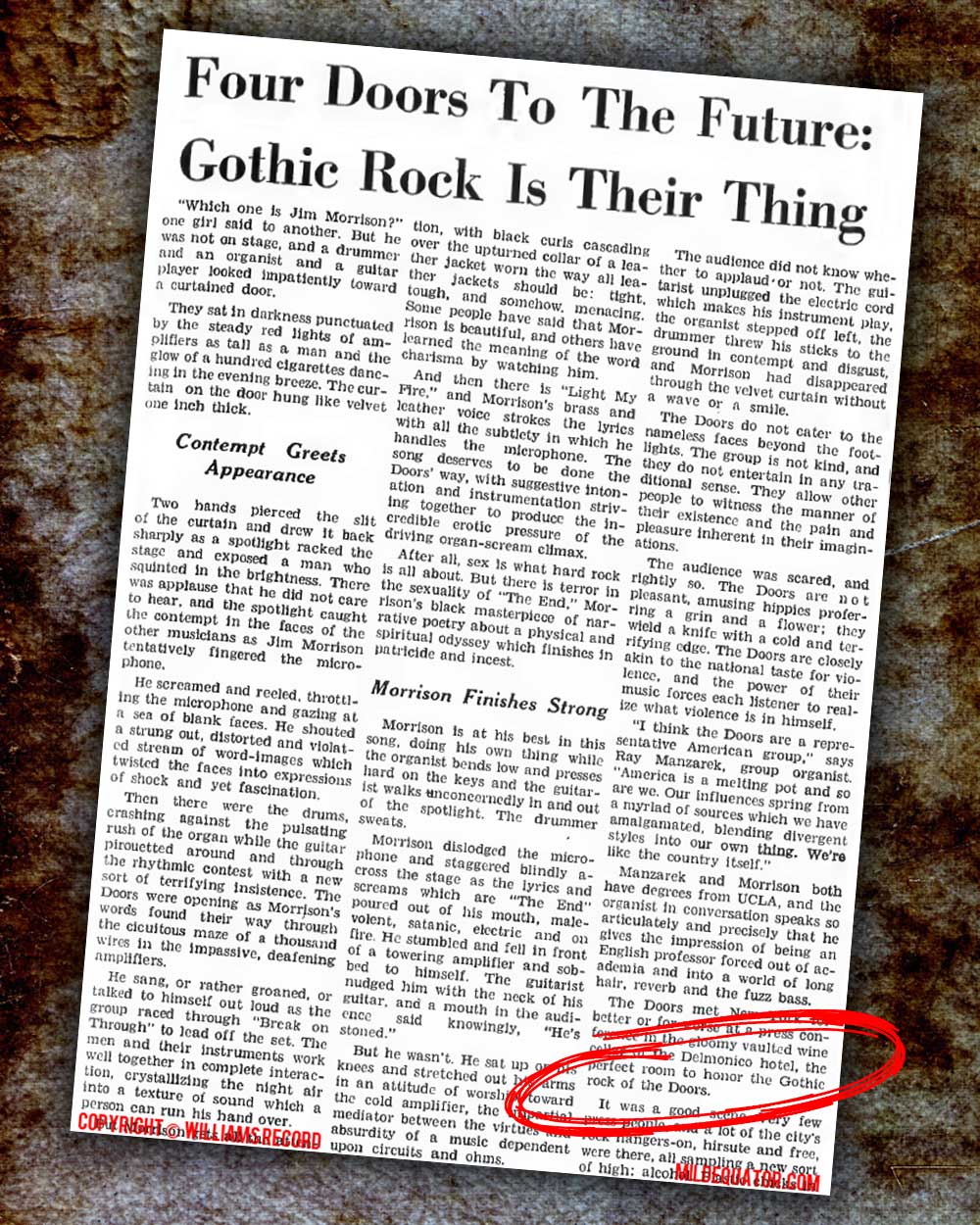
In the late 1970s, the Goth style was a recognised way of dressing revolving around dark and rebellious clothing inspired by post-punk bands such as Siouxsie and the Banshees, Magazine, and Joy Division, wrapped in an overall mysterious look.
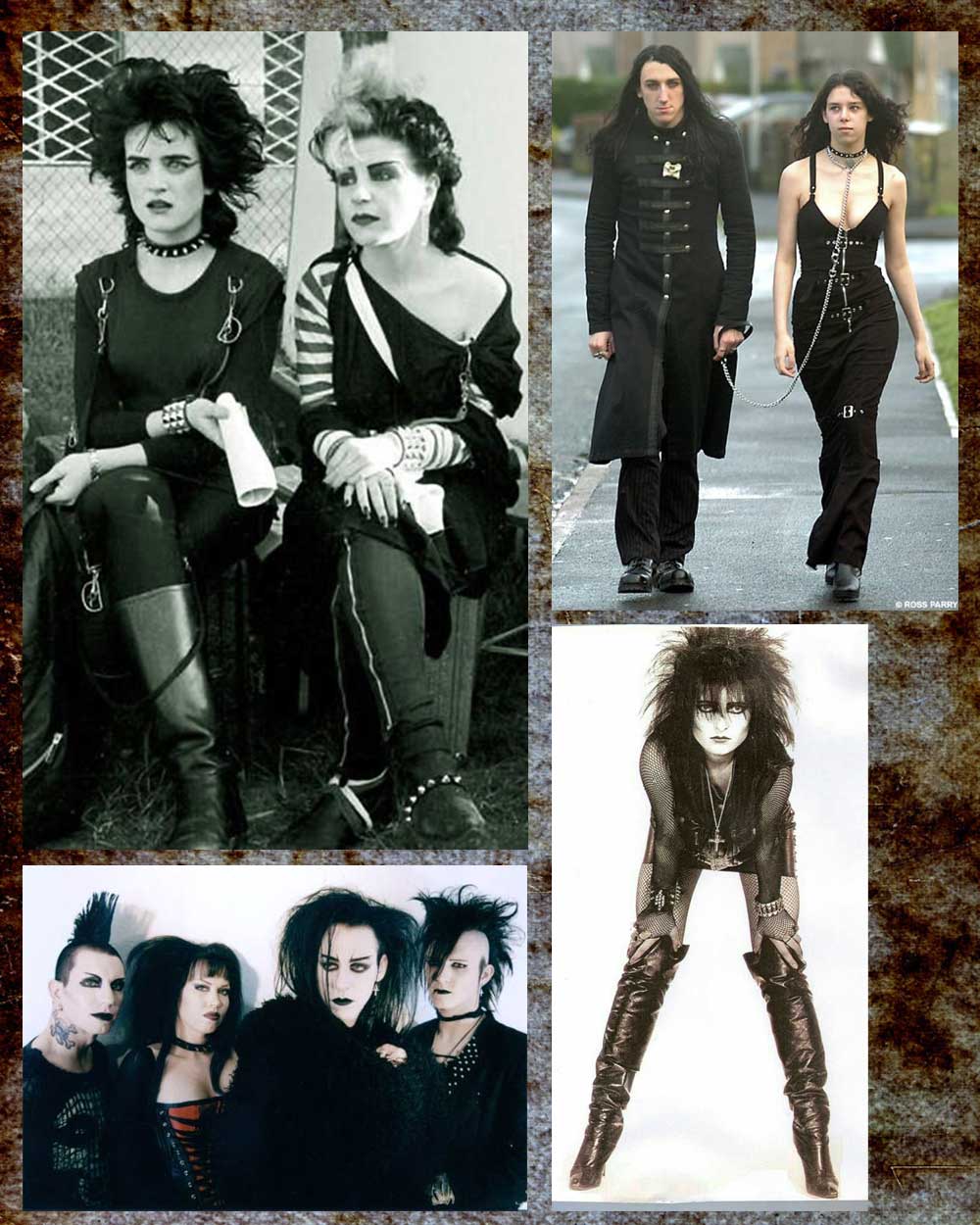
The Gothic style’s dark and distinct aesthetic was the opposite of the colourful disco genre of the 1980s, which was promoted by the rise of new-wave pop media and celebrities.
Dark, rebellious, extravagant, and mysterious, the Goth fashion allowed the Goths to distinguish themselves from the mainstream culture.
What’s Your “Gothness” Level?
Goth style has different subgenres, each with different takes on what constitutes the “true” or “original” goth fashion.
These subgenres impact the degree to which individuals are seen as members of the goth subculture.
On one end of the spectrum are the hardcore, or the “Uber Goths.” These goths have reached a level of gothiness above what a living human is capable of (particularly in paleness!).
Another term to describe old-school goths is “Batcavers,” recalling the members of the Batcave club launched in London in 1982, a gathering point for early Goths/

On the other end of the spectrum are the “baby bats” or “mall goths” terms used to describe goth wannabes or kids going through a “goth phase.”
According to the hardcore goths, these kids wear expensive brands while spending time in malls, which is the opposite of the Goth’s rebellious consumeristic nature.

However, between these two extremes, Goth fashion is varied, showcasing various influences, from Industrial tech to vampires and death.
Goth Aesthetic Elements
The Goth aesthetic is complex and draws influences from a wide range of sources, such as medieval tribes and Victorian-era fashion, Gothic architecture and French cathedrals, 19th-century fiction and horror movies, and the 80s post-punk movement.
As such, spiritual and supernatural figures such as demons, vampires, ghosts, and monsters living in ruinous castles, gloomy churchyards, and claustrophobic monasteries are a big part of the Gothic aesthetic.
The most common colours in Goth fashion are black, red, silver, white, purple, blue, green, gold, and pink.
Goth Fashion
In line with the subculture’s origin, the early Goth fashion style draws from the rock music scenes of the 1970s and early 1980s, including punk, new wave, and New Romanticism.
The early Goths’ dressing style is known as Trad-goth, also known as Ethergoth. It was inspired by Siouxsie Sioux and other mid-1980s musicians like Elizabeth Fraser and Lisa Gerrard.

Mainly represented by women, it was characterized by new wave hairstyles, both long and short, partly shaved and teased, and 80s street-compliant clothing.
It included black frill blouses, midi dresses or tea-length skirts, floral lace tights, Dr. Martens, spike heels or pumps, and pointed-toe buckle boots or winklepickers.
Also, the clothing was supplemented with accessories such as silver bracelets, chokers, and bib necklaces.
Today, Goth dressing styles borrow aesthetics from the Victorian, Edwardian, and Belle Époque eras of the 18th and 19th centuries.

For example, the “Victorian cult of mourning” of the 18th century, which mandated head-to-toe black, inspired members of the Goth subculture to create images of the femme fatale and the vamp.
Goth fashion is also influenced by horror fiction themes such as crucifixes, bats, vampires, and religious imagery such as pagan and occult.

At the same time, vampire film characters reinforced the enthusiasm among goth males for whitened faces, long dark hair, and shades.
Over the years, the Gothic fashion style has also taken elements from other genres, such as steampunk, cyberpunk, rave, fetish wear, and cosplay.

Current Types of Goth Styles
The internet has given birth to several variations of Goth dressing styles, most of which are discarded by the subculture’s OGs, who do not consider them part of the subculture.

Some variations are formed according to the level of Gothness, participation in specific activities, or interest in certain types of fashion, music, and art.
Some are based only on the Gothic aesthetic and have little connection with the music genre of the 80s.
Other subgroups are created at the convergence of Goth fashion with different styles and genres.
Or traditional goth, this is the original Goth look that emerged in the 80s in London’s Batcave club. Lovers of Bauhaus and Siouxsie, Trad Goths wear fishnets and leather jackets and have voluminous hair paired with heavy makeup.
A way of dressing that conveys one’s creative, dreamy, and emotional love for the dark, romantic fashion. RGs wear velvet and lace in flowy silhouettes and listen to softer genres of Goth music.
Those who linger on the dark and gloomy aspect of Goth wear all-over black outfits, wear dark makeup, and listen to darker goth music.
Drawn to supernatural fiction with a fixation on vampires, pale features, dark makeup, black cape, and Victorian clothes.
The kinkiest goths, who embraces the subculture’s “sexual empowerment” ideology. Wear chains, leather, fishnet, strappy bondage gear, lots of tattoos, and piercings, drawn to music with references to fetish and kinkiness.
A derogatory term to describe newcomers to the Goth scene dressed in goth-inspired clothes from expensive brands.
People wearing Goth as a trend, just to be cool; wear commercial clothing you’ll find at online stores like Hot Topic with no interest in Goth music or culture.
Those who like gothic style and music but see it as fun and do not adopt a doom-and-gloom attitude wear brighter colours, body glitter, and fun accessories.
Type of goth who listens to darkwave, a subgenre of goth music that fused goth rock and synthpop/new wave. Darkwavers dress in a more ethereal style: longer hair, lacy fishnets, and flowing/sleeved clothing or dresses.
Emerged from the convergence of techno, dance, industrial, and Goth music in combination with the Cyber scene of the 90s. Their fashion is radical, futuristic, dystopian, and dark: neon vests, corsets, fishnets with leg warmers, cargo or leather pants, platform boots, leather chokers, neon dreadlocks, gas masks, and goggles.
Emerged as a Victorian “Cult of Mourning” after Prince Prince Albert’s death in 1861, the look is comprised of all-black Victorian-style outfits and dark smokey eye makeup.
Between the Emotive Hardcore and Goth music genres, Emo Goth looks include traditional goth and modern Emo clothes like skinny jeans, band tees or tank tops, Converse sneakers or Doc Martens boots, and dark makeup.
Similar to Riot Grrrl, was coined by Jack of Jills’ lead singer, who famously wore bloody babydoll dresses on the stage and sang feminist songs to address self-harm, depression, and feminism.
Those who enjoy gothic music and hippie ideology at the same time. Fashion includes long black and dark-coloured maxi dresses, flowy shirts or pants, black bandanas, oversized glasses, and accessories with occult symbols.
Combines Rockabilly and Psychobilly aesthetics with Goth retro style: Fringe bangs, pencil skirts, heels, garters, or fishnets for feminine looks; ripped shirts, leather jackets, and black denim pants for masculine looks. Tattoos and piercings are also pivotal.
A version of Goth that draws more inspiration from the New Romantic and New Wave movements than Punk, its fashion is more androgynous: dark clothing in dandy silhouettes, padded shoulder leather jackets or blazers, frills, studs, heavy makeup, and big hair.
It emphasizes the medieval heritage of the Gothic genre. The fashion is inspired by the medieval period (5th to 15th century): dark embroidered corsets, black long-sleeve maxi dresses with underskirts or lace-up shirts with loose pants, and ankle-turn shoes.
Also known as J-Goth, it is Japan’s rendition of the Goth subculture among other types of Lolita.
Depicts “Geeky” goths who love video games, comic books, conventions, anime, cosplay, and anything sci-fi-related.
Or Gothic Bellydancer, describes people who blend bellydance clothes and music with a Gothic flair. Hipskirts and accessories from bone and wood are commonly used in this subgroup.
A modern take on classic Goth, Nu-Goth focuses more on fashion and style than music. Nu-Goths imagery emphasizes the romanticization of witches, paganism, and the occult.
Or Burlesque Goth is inspired by Cabaret or Burlesque shows. Dita von Teese is the pioneer of this movement among the Goths.
A newer type of Goth created by the Estonian pop singer Kerli Koiv. She aims to “make the beautiful, creepy and the creepy, beautiful.”
Refers to people who adopted corporate life while still living the Goth lifestyle. The corporate job manifests in appearance, lifestyle, and ideology.
Haute Goth or Luxury Goth
“Haute Goth” is a recent term for high-fashion creations and runway collections that draw inspiration from Gothic fashion.
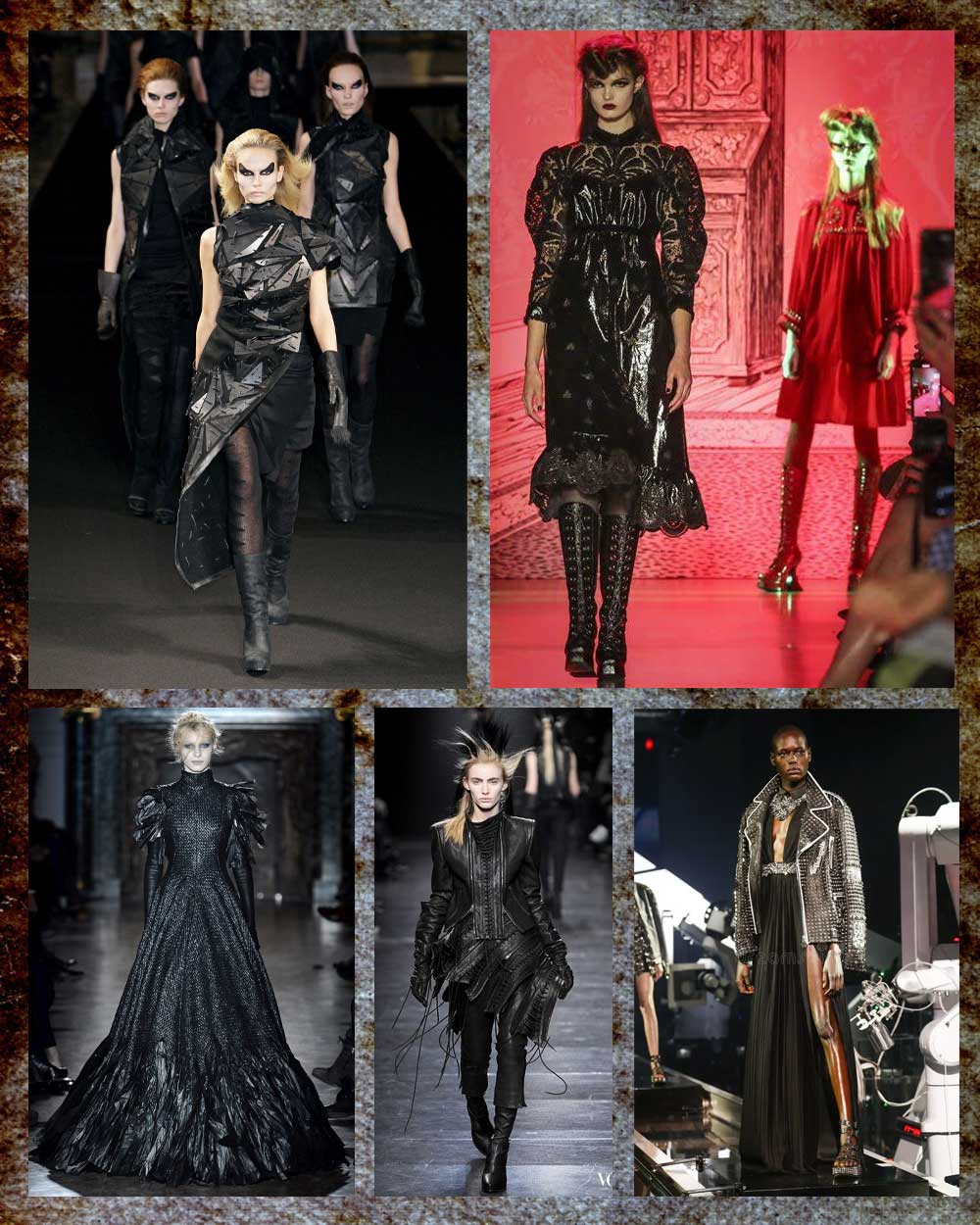
A University of Oxford graduate in Design History, Katherine Saxon is researching arising TikTok cultures from a consumer psychology perspective while covering emerging aesthetics in fashion and beauty for TheVOU, Forbes, Business Insider, and more.
After years of managing hundreds of fashion brands from London's office of a global retailer, Mandy has ventured into freelancing. Connected with several fashion retailers and media platforms in the US, Australia, and the UK, Mandy uses her expertise to consult for emerging fashion brands create top-notch content as an editorial strategist for several online publications.
A passionate advocate for inclusivity and diversity, Aidan is the driving force behind The VOU as its Editorial Manager. With a unique blend of editorial acumen and project management prowess, Aidan's insightful articles have graced the pages of The Verge, WWD, Forbes, and WTVOX, reflecting his deep interest in the dynamic intersection of styling with grooming for men and beyond.


